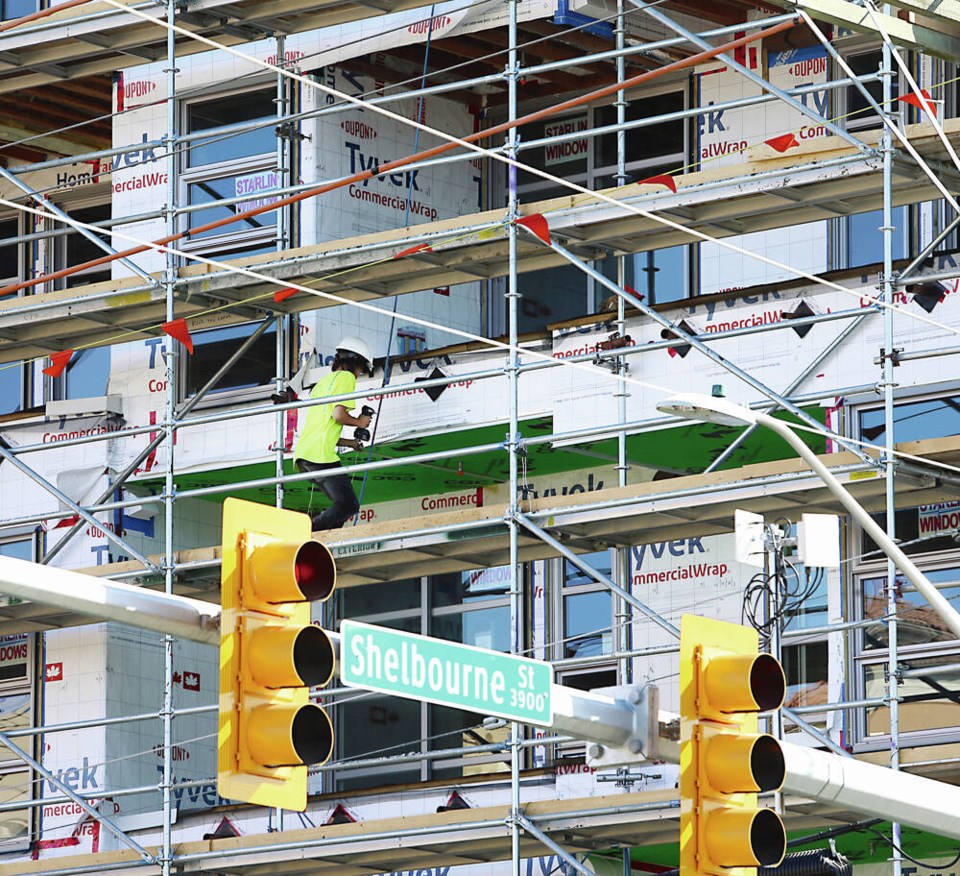Canada’s homeownership rate is on the decline, with young adults in particular less likely to own a home in 2021 than they were in 2011, says Statistics Canada.
According to the latest release of census data, two-thirds of Canadians owned a home in 2021, down from a peak of 69 per cent a decade earlier.
The decline in home-ownership rates between 2011 and 2021 was the largest for younger Canadians, with the rate falling to 36.5 per cent from 44.1 per cent for those between the ages of 25 and 29.
Statistics Canada says the number of renter households grew at more than twice the rate of owner households between 2011 and 2021.
Casey Edge, executive director of the Victoria Residential Builders Association, says he’s not surprised that home-ownership is dropping among young people, since B.C. has the highest average house prices in Canada.
In part, that’s because many municipalities are “choking” housing supply through very slow approval processes for new construction, he said.
As the Oct. 15 province-wide municipal elections approach, the association is calling for mandatory housing development education so elected officials can learn about the challenges and costs to create new housing, Edge said Wednesday.
Candidates talk about the need for affordable housing, but many do not understand the industry, he said. “Their campaign promises sound more like a wish list as opposed to grounded in reality.”
Citing a Canada Mortgage and Housing report, Edge said that between January and July of this year, there was no so-called missing middle housing — which includes townhouses and houseplexes — built in Saanich, Oak Bay, Central Saanich, Highlands, Metchosin or North Saanich.
“So that in half of the municipalities in Greater Victoria, we have very little or no missing middle housing being constructed,” Edge said. “And yet, we have all of these young families … looking for that product. Why is that product not being constructed? Because those municipalities obstruct that product.”
Edge said it can take just seven days to get a simple building permit approved in Langford — known for its quick response to development applications — while in other municipalities, a similar permit could take months to receive approval, which drives up costs.
In August, the benchmark or typical price for a single-family house in Greater Victoria was $1.248 million, while the benchmark price for a condominium was $616,400.
Statistics Canada says 20.3 per cent of people in the capital region live in condos.
Tony Zarsadias, chief executive of Island Realm Real Estate, said the capital region has always attracted buyers from Alberta, but in 2015-2016, Greater Victoria “really got on the radar” as the market strengthened.
The company, which often markets condominiums, started seeing interest rise from across the country. Potential buyers were registering online from across the country in numbers not seen before, he said.
Zarsadias said he anticipates more sales in the condo market because they are more affordable.
The dream of having a single-family house is still alive for many people, Zarsadias said. But people get into home ownership by buying a condo or townhouse first to get into the market.
Millennials made up the largest share of the approximately 4.3 million Canadians living in condos in 2021, with nearly three in 10 condo-dwellers being in that age cohort.
According to Statistics Canada, newly built homes in Canada are increasingly likely to be occupied by renters, with 40.4 per cent of new homes built between 2016 and 2021 now rented out.
The federal agency compared monthly shelter costs of renters and homeowners and found those costs rose faster for renters than homeowners in the latest census period.
The median monthly shelter cost for renters went up 17.6 per cent between 2016 and 2021, outpacing inflation, as the consumer price index rose by 9.5 per cent over that same period. For homeowners, the median monthly shelter cost went up by 9.7 per cent.
Housing affordability actually improved in 2021, but one in five renters still spent more than 30 per cent of their income on shelter costs.
Statistics Canada says the improvement in affordability was the most pronounced for low-income renters and can be largely attributed to temporary COVID-19 income supports.
Mike Moffatt, an assistant professor at Western University’s Ivey School of Business, said the data doesn’t give an accurate depiction of housing affordability because of these support measures.
“It’s going to be quite misleading just because people were receiving this sort of one-time boost to incomes,” Moffatt said.



